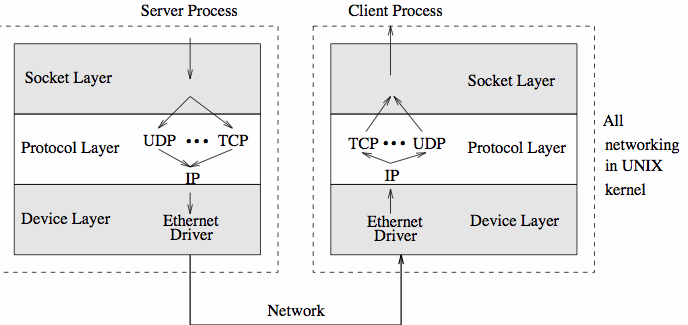

|
CITS3002 Computer Networks |
| ← prev | next → |  CITS3002
CITS3002 |
 help3002
help3002 |
 CITS3002 schedule
CITS3002 schedule |
|||
An Example Network API - Berkeley SocketsSockets are a generalization of the original Unix file system model. The most important difference is that the operating system binds file descriptors, once, to files and devices when they are opened. With sockets, applications can specify the destination each time they use the socket. When sockets were first proposed (1982 in 4.1cBSD), it was unclear how significant TCP/IP would become. As a (beneficial) consequence, sockets have been designed to use many different protocols.

The current (kernel) socket implementation consists of three parts :
Essential reading:
A
Guide to Network Programming using Internet sockets,
by Brian "Beej" Hall.
CITS3002 Computer Networks, Lecture 8, Transport layer protocols and APIs, p9, 24th April 2024.
|